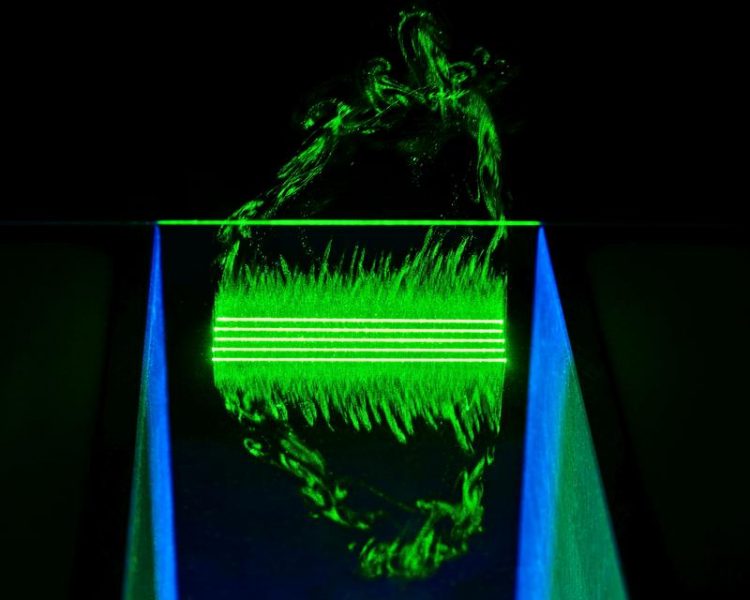High Resolution Laser Structuring of Thin Films at LOPEC 2017

Laser ablation of ITO on flexible PET substrate. Fraunhofer ILT, Aachen, Germany
The requirements for competitive process engineering for producing organic electronics are high: structure sizes below 10 µm, high speeds with ablation rates of several mm2/min and applicability to several m2. Researchers from Fraunhofer ILT investigate laser based processes for flexible micro structuring of thin films.
Through the laser complex structures can be fabricated at high surface rates. Customized wavelengths and pulse durations enable the use of specific optical characteristics of organic and inorganic materials.
Even at high speeds the laser precisely structures thin films with the developed processes. Compared to conventional processes various approaches to beam guiding and shaping improve resolution and productivity significantly.
Our experts are looking forward to give you more details about this topic at LOPEC 2017.
Contact
Dipl.-Ing. Christian Hördemann
Group Micro and Nano Structuring
Phone +49 241 8906-8013
christian.hoerdemann@ilt.fraunhofer.de
Ludwig Pongratz M.Sc.
Group Micro and Nano Structuring
Phone +49 241 8906-8044
ludwig.pongratz@ilt.fraunhofer.de
Media Contact
All latest news from the category: Trade Fair News
Newest articles

Red light therapy for repairing spinal cord injury passes milestone
Patients with spinal cord injury (SCI) could benefit from a future treatment to repair nerve connections using red and near-infrared light. The method, invented by scientists at the University of…

Insect research is revolutionized by technology
New technologies can revolutionise insect research and environmental monitoring. By using DNA, images, sounds and flight patterns analysed by AI, it’s possible to gain new insights into the world of…

X-ray satellite XMM-newton sees ‘space clover’ in a new light
Astronomers have discovered enormous circular radio features of unknown origin around some galaxies. Now, new observations of one dubbed the Cloverleaf suggest it was created by clashing groups of galaxies….





















